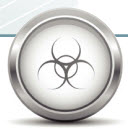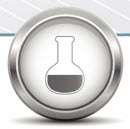-
- bimba
- Universal Robots
- dorner
- cobots
- industrial automation nj/ny
- The Knotts Company
- manufacturing
- Dorner Conveyors,
- The Knotts Co
- UR
- Robots
- PLC
- Unitronics
- automation
- humphrey products
- knotts company
- solutions
- HMI
- automation solutions
- cobot
- conveyors
- robotics
- aluminum extrusion
- aluminum extrusion in nj
- engineered solutions
- Robotiq
- air cylinder
- collaborative robots
- cost effective
- cost savings
- t-slotted extrusion
- bimba solutions
- collaborative robot
- technology
- MiR
- Humphrey
- IAI
- WAGO
- assembly
- bimba pneumatic
- machine guard
- smartflex conveyors
- solution
- 2200 Series
- cylinder
- electric cylinder
- motion control
- packaging
- pharmaceuticals
- sanitary conveyor
- Products
- automated palletizing
- automation control
- conveyor
- core competencies
- grippers
- palletizing
- resource
- robot
- AquaPruf
- Asycube
- Asyril
- Belt Conveyors
- Cage Clamp
- Food
- Machine Guarding
- Mobile Robots
- Norgren
- OptoForce
- Pneumadyne
- Pneumatic Valve
- ROBO Cylinder
- UR5
- actuators
- compressed air
- custom solution
- food safety and sanitation
- mobile industrial robot
- quality assurance
- robotics solutions
- safety
- stainless steel conveyors
- vision
- Belts
- Benefits
- Beverage
- Bimba IntelliSense®
- CT Effects
- PLC+HMI
- Proportion Air
- Proportional valve
- Questions
- Success
- UR10
- Vaccon
- automated inspection
- gripper
- improvement
- industrial vision
- intelligent actuator
- labeling application
- labor shortage
- life science
- medical
- medical industry
- pneumatic motion control
- sales process
- sensor
- thomas
- valve
- 3200 series
- 6-axis robot
- 80/20
- Acro
- Automate
- LMI
- Machine
- OnRobot
- Original Line Cylinder
- Pinch Valve
- Precision Technology
- Predictive Maintenance
- Preventive Maintenance
- Product News
- ROBO Cylinders
- ROI
- Reducing Costs
- automated mobile robot
- autonomous mobile robot
- connectors
- controls
- covid
- custom solutions
- customer service
- e-Series
- electric actuator
- electro-mechanical
- end of arm tools
- energy plant
- ethercat
- external resource
- flexmove technology
- guarding
- inspection
- machine control
- manufacturers
- monitoring
- motion
- new product
- outsource
- outsourcing
- packing
- pneumatic actuator
- pneumatic valves
- precision move
- quick response solution
- regulator
- sales tools
- steel frame
- vacuum
- vacuum technology
- welded steel frame
- 7X Series Conveyor
- AMR
- Advantages
- Application
- Applied Motion Products
- Asycube 530
- Asyfeed Pocket
- Balanced Valves
- CNC program
- Continuity Inspection Tool
- Control Panel
- Controllers
- Crowned Pulley
- F22 Series
- Factory Improved Productivity
- Filtration
- Fire Fighting
- Flexible Feed
- Freeze protection
- Gas
- High Pressure Regulator
- IP65
- Inspekto
- IntelliPress
- Intellisense
- International Manufacturing Technology Show 2016
- LARGO A5
- Legos
- MIRAI
- Machine Controllers
- Machine Vision
- Micropsi
- NJ
- NY
- New
- New Scale Robotics
- OEE
- Oil
- Optimization
- PACK EXPO
- PC10
- Parison Blow Molding
- Pick-it
- ProControl Series
- ROEQ
- Rain Test
- Resin Block
- Rio Olympics
- SCHUNK
- Sanitation
- Sensors
- Smart Manufacturing
- Spot Welding
- TRD
- Temperature Controller
- Training
- Trio Manufacturing Technology
- Twist Clamp
- UR3
- UniStream
- Universal
- V-guide
- Valve Assemble
- Vane-Buster
- Versagrip
- Versagrip solenoid pinch valves
- Victory Actuator
- Vision430
- XTR Series
- Yamaha
- balanced solenoid valve series
- bimba electric
- bottle filling
- brewery
- brushless motor
- buna
- center point
- chicane
- cloud
- cobot compliance
- collaborative operation
- compact series
- composite cylinder
- conference
- cost
- date code
- demonstration
- desiccant drier
Get the latest in your inbox.
This post is brought to you by Humphrey Products.
If your company produces medical devices, contract manufacturers can provide flexibility, expertise, and experience. Choosing contract manufacturers who are certified can offer an array of benefits:
- Access to growing markets around the world
- Demonstrable commitment to efficient, safe processes
- Protection against audits and litigation
- Marketable dedication to quality
The question? Which standards are relevant, and what certifications to look for.
Read on to discover the requirements and applications of the medical device industry’s manufacturing standards.CGMP The current Good Manufacturing Practice regulations are the FDA’s standard for the manufacture of medical products. Manufacturers failing to comply with cGMPs are consistently the target of regulatory actions.
The current Good Manufacturing Practice regulations are the FDA’s standard for the manufacture of medical products. Manufacturers failing to comply with cGMPs are consistently the target of regulatory actions.
ISO 9001:2008 This standard describes 10 quality management principles including a process-centered approach, factual decisionmaking, and continual improvement. After a 3-year grace period following the introduction of ISO 9001:2015, ISO 9001:2008 will become obsolete in September of 2018. Manufacturers certified by registrars have been independently verified in their adherence to ISO standards. A certified manufacturer has been extensively audited and meets all requirements.
This standard describes 10 quality management principles including a process-centered approach, factual decisionmaking, and continual improvement. After a 3-year grace period following the introduction of ISO 9001:2015, ISO 9001:2008 will become obsolete in September of 2018. Manufacturers certified by registrars have been independently verified in their adherence to ISO standards. A certified manufacturer has been extensively audited and meets all requirements.
CFR 820 and ISO 13485 FDA 21 CFR 820 and ISO 13485 are the key standards for medical device manufacturers in the US and Europe, respectively. These standards form the basis for compliance to regulatory requirements such as cGMPs.
FDA 21 CFR 820 and ISO 13485 are the key standards for medical device manufacturers in the US and Europe, respectively. These standards form the basis for compliance to regulatory requirements such as cGMPs.
These extensive standards provide guidelines for a range of activities, including the design, production, traceability, labeling, and servicing of medical devices. While compliance may be costly, these standards open up markets around the world and are the best way for medical device manufacturers to protect against any potential litigation.
ISO 14971 This 9-part standard helps manufacturers reduce liability by describing best practices for risk management. ISO 14971 outlines correct processes for evaluating risks, hazards, and product performance requirements. Required for products to be sold in Europe if they are Class 2 or higher (has to do with invasiveness)
This 9-part standard helps manufacturers reduce liability by describing best practices for risk management. ISO 14971 outlines correct processes for evaluating risks, hazards, and product performance requirements. Required for products to be sold in Europe if they are Class 2 or higher (has to do with invasiveness)
IEC 60601 This standard applies to the electrical compatibility and safety of medical equipment. IEC 60601 certification requires careful documentation of the design and manufacture process.
This standard applies to the electrical compatibility and safety of medical equipment. IEC 60601 certification requires careful documentation of the design and manufacture process.
RoHS The RoHS directive restricts the use of Lead, Cadmium, Mercury, Hexavalent Chromium, PBB, and PBDE in electronic equipment.
The RoHS directive restricts the use of Lead, Cadmium, Mercury, Hexavalent Chromium, PBB, and PBDE in electronic equipment.
All electrical medical devices sold in Europe must comply with RoHS. Failure to comply can lead to fines and restrictions in the region.
REACH REACH describes over 140,000 chemical substances for sale and distribution in the EU, and restricts the use of approximately 200 hazardous materials.
REACH describes over 140,000 chemical substances for sale and distribution in the EU, and restricts the use of approximately 200 hazardous materials.
European regulations require retailers to provide information about substances in their products within 45 days of a request. REACH-compliant manufacturers help retailers doing business in the EU avoid costly penalties.
FCC and CE Marking While not strictly standards, FCC and CE marking processes are worth understanding. When placed on products, these marks constitute a manufacturer’s assertion that they meet all applicable safety requirements.
While not strictly standards, FCC and CE marking processes are worth understanding. When placed on products, these marks constitute a manufacturer’s assertion that they meet all applicable safety requirements.
Manufacturers using the FCC or CE marks must carry out selfassessments and submit signed declarations of conformity to the relevant legislative bodies.
While not strictly standards, FCC and CE marking processes are worth understanding. When placed on products, these marks constitute a manufacturer’s assertion that they meet all applicable safety requirements. Manufacturers using the FCC or CE marks must carry out selfassessments and submit signed declarations of conformity to the relevant legislative bodies.
“The FDA expects that the spec developer will make sure the contract manufacturer is QSR/ cGMP compliant.”
-Alan Schwartz, FDA Veteran
Interested in a Humphrey Product?
Interested in Learning More?
Please fill out our contact form, and a member of the Knotts Team will get in touch to help you.
%202.png?width=323&height=215&name=PH_VA_VR_Series_Technical_Support%20(1)%202.png)


.png?width=200&height=200&name=2017-02-10_14-10-22%20(1).png)
